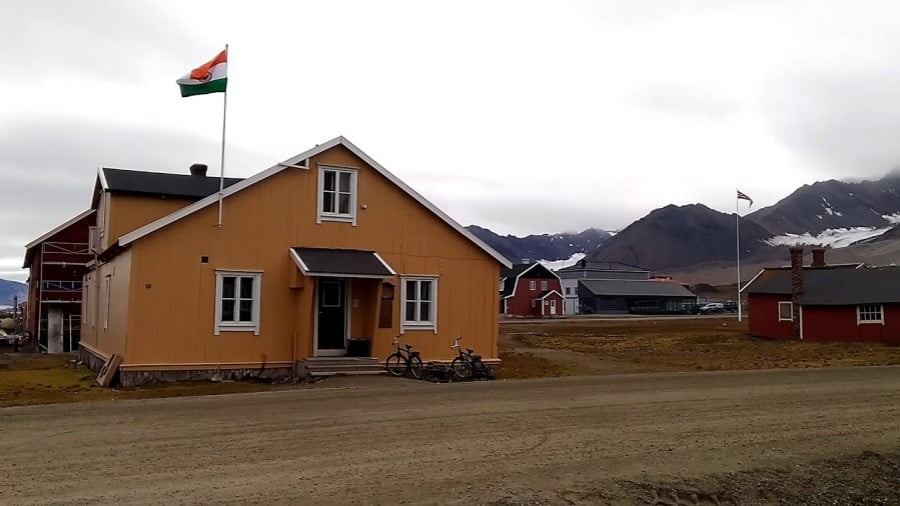India’s Arctic Strategy
The Indian government has unveiled its own Arctic strategy. A special government website says that “the importance of the Arctic for India is constantly growing, primarily due to the problems associated with climate change and global warming. India was granted observer status in the Arctic Council in 2013, becoming one of thirteen countries in the world to do so. The fact that this status was renewed in 2018 reflects India’s contribution to the study and research of the Arctic… India seeks to play a constructive role in the Arctic by leveraging its vast scientific potential and expertise in the Himalayan and polar exploration. India would also like to do its part to ensure that, as the Arctic becomes more accessible, its resources are used sustainably and in line with best practices developed by bodies such as the Arctic Council. The Indian Arctic Policy Draft reflects these goals while charting the way forward that focuses on building capacity to enhance our engagement with the region.”
In the document, one can find quite amusing historical bloopers that look like certain political claims. For example, it says that “India’s involvement in the Arctic began in February 1920, when it signed the Svalbard Treaty in Paris. Its experience in polar research began in 1981, when the first scientific expedition to Antarctica was undertaken. India began its first scientific expedition to the Arctic in 2007. The purpose of the expedition was to begin a series of basic measurements in the fields of biological sciences, oceanology, atmospheric sciences and glaciology”.
However, India as an independent sovereign state emerged in 1947, therefore, in 1920, India could not sign anything. Although the treaty on Svalbard includes the British dominions, the British king acted on their behalf as the emperor of India, and the document was actually signed by Count of Derby Edward Stanley, who at that time served as ambassador to France, but at the same time represented India.
That is, in fact, British India was represented by the British themselves, as well as the dominion of New Zealand, the commonwealth of Australia and the Union of South Africa.
Of course, the huge distance separating India from the circumpolar territories and waters allows us to ask the question, what does India really need there, besides comparing scientific research carried out in its own Himalayas?
Currently, Arctic issues in India are handled by the National Center for Polar and Oceanic Research, the Ministry of Earth Sciences, and the Ministry of Foreign Affairs represents India in the Arctic Council. A number of other ministries and agencies are involved in Arctic-related activities and the Indian government plans to further engage them in this issue in the future.
In the paragraph on the scientific objectives of the strategy, it is noted that India is interested in strengthening the existing research base of Himadri in Norway, as well as actively using the existing observation systems in Svalbard. The third point on energy resources openly states that it is interested in the exploitation of hydrocarbons that have not yet been developed. Since India has invested 15 billion dollars in oil and gas projects in Russia, it sees similar opportunities in the Arctic. In addition, there is interest in the deposits of various minerals – copper, phosphorus, rare earth metals and platinum.
It also states that “as new opportunities open up in the Arctic, India will increase its human resources. India’s participation in the Arctic will be based on a corresponding increase in its internal potential – from science and intelligence to navigation and economic cooperation.”
The findings indicate that India’s activity in the Arctic has become multidimensional. In just over a decade, it has grown from a humble station in Svalbard to a scale capable of covering a wide range of activities. In addition, given the synergy between research related to the Himalayas and the Arctic, and the potential impact of changes in the Arctic on the Indian monsoon system, India’s share of interests in the Arctic is significant. India views the Arctic as a common heritage of humankind. India is well positioned to leverage its accumulated experience within its vast human resources to help explore the Arctic and conserve its unique biodiversity. India believes that any human activity in this fragile region must be sustainable, responsible and transparent in accordance with international law, including the United Nations Convention on the Law of the Sea. Therefore, India looks forward to expanding its engagement with this vital region and its governing bodies as a responsible partner.
This policy is implemented in a systematic manner within the framework of a specially created mechanism that takes into account priorities, deadlines for solving problems and the use of resources. The project will involve all stakeholders, including academia, research community, business and industry.
Despite the fact that the document is ready, authors are invited to send their comments and suggestions by January 26, 2021.
Now let us analyze this from the perspective of Arctic geopolitics, the interests of India and its partners.
The Northern Sea Route is controlled by Russia and China is the main partner and beneficiary to this day. The route from Shanghai to Rotterdam through the Arctic is shorter than through the Indian Ocean. For India, this route is longer than the traditional southern sea route. Consequently, the speed of transportation and additional sea communication is not a priority for India.
Also, India, unlike China, which positions itself as a sub-Arctic power, does not have its own icebreakers, so there can be no talk of full participation in the development of the Arctic. By the way, China released its Arctic strategy in January 2018, which is three years earlier than India’s.
As for the human resources, it would be more correct to talk about the possible labor migration of Indians to the Arctic countries. The states of the Middle East are overflowing with labor from India. Many people from India live in the EU, USA, Canada, Australia and New Zealand. Given the demographic situation within India, where there is no birth control, as in China, this “human resource potential” may in fact represent organized migration flows in the future.
The Indian Arctic Strategy came out on the eve of the change of the chairmanship in the Arctic Council – in May 2021 it will be transferred to Russia for two years. Probably, there was an intention to use the historical ties between the two countries so that Russia lobbied for the new interests of India.
However, one must ask the question – whose interests, besides its own, can India be lobbying? India’s largest partner is the United States. India is a member of the Quadripartite Security Dialogue Group (US, Japan, Australia and the US) and China’s main opponent in South Asia. China is also positioned as a competitor and even an adversary in the other three countries, especially the United States. Moreover, the Quadripartite Security Dialogue has often been referred to as an Asian NATO and a counterweight to the SCO.
But in the Arctic for the United States and its security partners, Russia appears to be the main threat. In this regard, a recent report by the Center for Strategic and International Studies from Washington is indicative, which states that “the US compensatory coalition-based approach will prioritize working with the Arctic and near-Arctic allies to soften Russian actions… Under this framework, the United States should prioritize multilateral initiatives with allies, such as improving communications infrastructure and search and rescue capabilities and providing year-round access and space awareness, that pose less of a direct threat to Russia, but improve the ability of the United States to operate. in the region”. In other words, in order not to act rudely, which may cause a corresponding reaction from Russia; it is proposed to launch reliable partners of the United States into the Arctic, who will do the necessary work for them.
In general, the US wants to maintain access to the region; improve the architecture of intelligence, surveillance and reconnaissance; focus on nuclear safety. All this can be done by India, given the agreements with the United States in the military and intelligence fields. In addition, there are notes in India’s Arctic strategy reminiscent of the US claims about the need for free navigation, which does not exclude the preliminary agreement of New Delhi with Washington.
At the same time, it should be noted that the United States is concerned not only with legitimate Russian interests, but also with possible actions of China in the Arctic. Therefore, inciting India, which is China’s regional opponent, to take appropriate action, fits well into the logic of the American strategy of confronting China.







